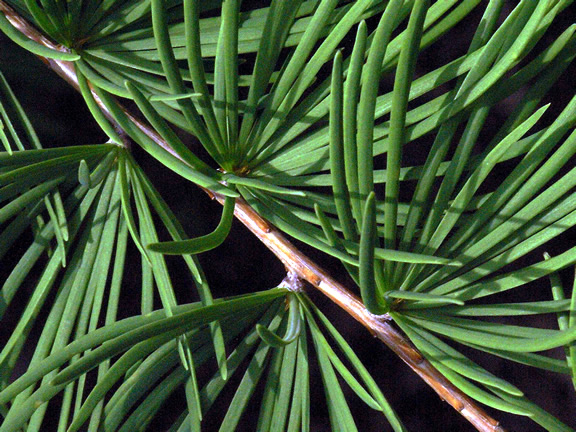| General Description | Pseudolarix amabilis or Golden Larch is a deciduous conifer with distinct horizontal branching, drooping branchlets and clusters of soft, bright green needles that turn a beautiful golden colour in autumn. |
| ID Characteristic | Cones are different from the true larches (Larix): they are bigger, in clusters (versus singly), scales are pointed and fruiting cones disintegrate right after the seed ripens. Also, the needles are bigger in both length and width. |
| Shape | Broadly conical, often as wide as it is tall when immature. |
| Landscape | When deciding on a place to plant this tree, ensure that there is lots of room to grow. Its softly-textured needles and fall colour make it an attractive specimen planting. May also be used as a bonsai. |
| Cultivation | Grow in a location protected from strong winds, in full sun and moist, acidic humus . Tolerant of some shade. Since it is a large tree it should be planted in the larger, generous landscapes. |
| Pests | No serious pests or diseases of note. |
| Notable Specimens | Pinetum Park and Pine Lodge Gardens, Cornwall, England. |
| Habitat | Coastal mountain areas. |
| Bark/Stem Description | Red-brown, fissured (covered in long, narrow cracks). |
| Leaf Description | Bright green, 3 - 6 ⨉ 0.2 - 0.3 cm with a rounded tip and two glaucous stomatal bands on the underside, turning brilliant golden yellow in autumn before dropping. Arranged spirally in clusters on short shoots. Needle spacing is such that each is distinguishable from a distance. |
| Fruit Description | Cones are distinctive, superficially resembling a small globe artichoke, red-brown, erect, 4 - 7 ⨉ 4 - 6 cm, with pointed triangular scales; they mature roughly 7 months after pollination, disintegrating to release winged seeds. |
| Colour Description | The autumn colour is gold to russet. |
| Texture Description | The slender, smooth needles create a bushy, soft feathery texture. |

